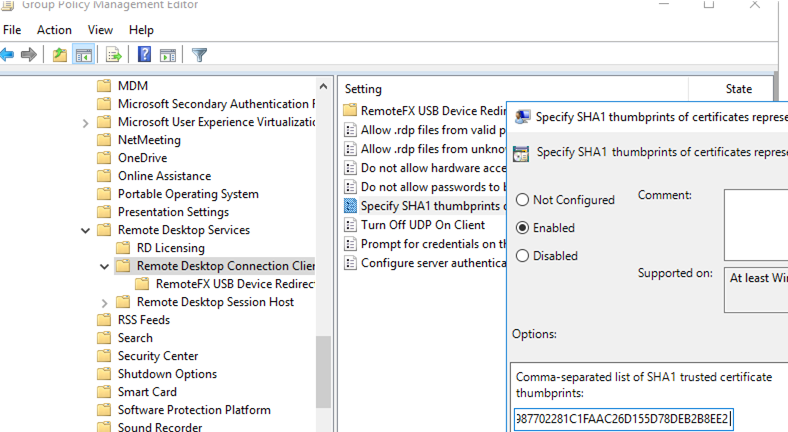

- #ENABLE TLS 1.2 WINDOWS 10 RDP INSTALL#
- #ENABLE TLS 1.2 WINDOWS 10 RDP UPDATE#
- #ENABLE TLS 1.2 WINDOWS 10 RDP PATCH#
- #ENABLE TLS 1.2 WINDOWS 10 RDP WINDOWS 7#
NET Framework 4.6.2 and later supports TLS 1.1 and TLS 1.2. NET Framework might require updates to enable strong cryptography. NET updates so you can enable strong cryptography. For more information, see Determine which versions and service pack levels of. NET versionįirst, determine the installed.

NET Framework to support TLS 1.2 Determine. Verify the HKEY_LOCAL_MACHINE\SYSTEM\CurrentControlSet\Control\SecurityProviders\SCHANNEL\Protocols registry subkey setting, as shown in Transport layer security (TLS) best practices with the.

You can make changes under Protocols to disable TLS 1.0 and TLS 1.1 after you've followed the rest of the guidance in these articles and you've verified that the environment works when only TLS 1.2 enabled. Therefore, no change to these keys is needed to enable it. Ensure that TLS 1.2 is enabled as a protocol for SChannel at the operating system level For more information, see Restrict the use of certain cryptographic algorithms and protocols in Schannel.dll. If you want to completely disable SSL 3.0 and TLS 1.0, use the SChannel disabled protocols setting in Windows. Configuration Manager supports the most secure protocol that Windows negotiates between both devices. You can use the value of 0xA00 to only enable TLS 1.1 and TLS 1.2. This configuration ensures that the change doesn't break any other application that might still rely on SSL 3.0 or TLS 1.0. The above example keeps these defaults, and also enables TLS 1.1 and TLS 1.2 for WinHTTP. By default in Windows, this value is 0x0A0 to enable SSL 3.0 and TLS 1.0 for WinHTTP.
#ENABLE TLS 1.2 WINDOWS 10 RDP UPDATE#
Update to enable TLS 1.1 and TLS 1.2 as default secure protocols in WinHTTP in Windows lists the hexadecimal value for each protocol. The example above shows the value of 0xAA0 for the WinHTTP DefaultSecureProtocols setting. If you change this value, restart the computer. HKEY_LOCAL_MACHINE\SOFTWARE\Wow6432Node\Microsoft\Windows\CurrentVersion\Internet Settings\WinHttp\ Verify the value of the DefaultSecureProtocols registry setting, for example: HKEY_LOCAL_MACHINE\SOFTWARE\Microsoft\Windows\CurrentVersion\Internet Settings\WinHttp\ Otherwise, you can inadvertently orphan them.
#ENABLE TLS 1.2 WINDOWS 10 RDP PATCH#
With the patch installed, create the following registry values:Įnable these settings on all clients running earlier versions of Windows before enabling TLS 1.2 and disabling the older protocols on the Configuration Manager servers.
#ENABLE TLS 1.2 WINDOWS 10 RDP INSTALL#
For these earlier versions of Windows, install Update 3140245 to enable the registry value below, which can be set to add TLS 1.1 and TLS 1.2 to the default secure protocols list for WinHTTP.
#ENABLE TLS 1.2 WINDOWS 10 RDP WINDOWS 7#
Windows 8.1, Windows Server 2012 R2, Windows 10, Windows Server 2016, and later versions of Windows natively support TLS 1.2 for client-server communications over WinHTTP.Įarlier versions of Windows, such as Windows 7 or Windows Server 2012, don't enable TLS 1.1 or TLS 1.2 by default for secure communications using WinHTTP. NET Framework to support TLS 1.2įor more information about dependencies for specific Configuration Manager features and scenarios, see About enabling TLS 1.2.


 0 kommentar(er)
0 kommentar(er)
